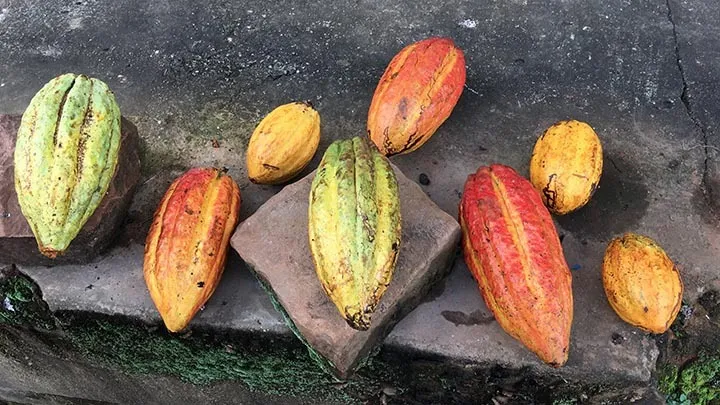Cocoa and Chocolate in Brasil - Part 1

In the mid-1980s Brasil was the largest producer and exporter of cocoa beans in the world. At one point, annual production exceeded 400,000MT.
Then, witches broom (moniliopthora (formerly crinipellis) perniciosa) was deliberately introduced by members of the PT (Partido dos Trabalhadores, or Workers’ Party) in an attempt to bring down the wealthy landowners, called coronels, that controlled cocoa production.
No thought was given to the possibility that the broom might spread, which it did. Within a short time, Brasil’s cocoa output was reduced by more than 75% and anywhere between about 100,000 and 250,000 workers found themselves without work. Collateral damage. The hoped-for outcome of bringing down the coronels was to give land to landless workers, which did not happen. The system of smallholder farming and co-operatives common elsewhere in South America is not that common in Brasil.
 The post-harvest center at Fazenda Venturosa, about an hour west of Itabuna. Behind is worker housing and to the right are a school and a church.
The post-harvest center at Fazenda Venturosa, about an hour west of Itabuna. Behind is worker housing and to the right are a school and a church.
Today, nearly 30 years later, the industry has still not recovered. Though production has increased considerably, combating witches broom is still a struggle and quality and productivity still need work.
Unlike Ecuador and Peru, which have embraced open sun farming, much of Brasilian cocoa is grown under what is known as the cabruca system, under the shade of the rainforest. While there is some CCN-51 in the country, much of what has been planted over the past 15 years is disease-resistant clones identified by CEPLAC, the Brasilian agricultural research center. These varieties were not chosen for their flavor characteristics.
More recently, there has been a resurgence of interest in planting flavor varieties for use in making chocolate within Brasil and for export. There are some well-known chocolate makers (including Bonnat) using Brasilian cocoa, the total amount of cocoa exported is almost certainly under 100MT. Import restrictions make it impossible for the growing community of Brasilian craft chocolate makers to experiment – legally – with cocoa from other countries. The basis for the restriction is the fear that another disease, such as monilia, could be introduced. The government does allow large processors to import, but only from specific countries and where specific precautions are taken to reduce the likelihood of introducing another disease. However, I was told that small quantities are being smuggled into the country for experimentation purposes.
Despite the restrictions on craft chocolate makers to using only cocoa grown in Brasil, and the fact that much of the cocoa is not known for its flavor, there is a surprising amount of well-made chocolate in Brasil coming from smaller producers. When I say well-made I am referring to technical and objective measures of quality. There is still work to be done on improving post-harvest across the board, though there are some very accomplished operations, including those of João Tavares, and producers who have engaged Dan O’Hoherty of Cacao Services (Hawaii), that point to a very bright future for Brasilian cocoa and chocolate.